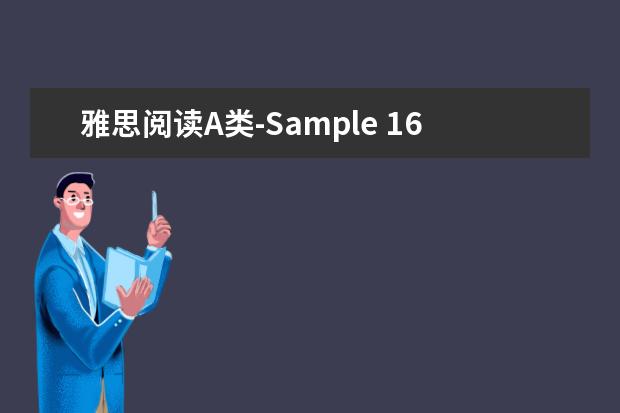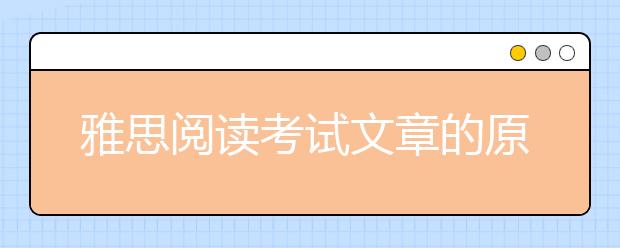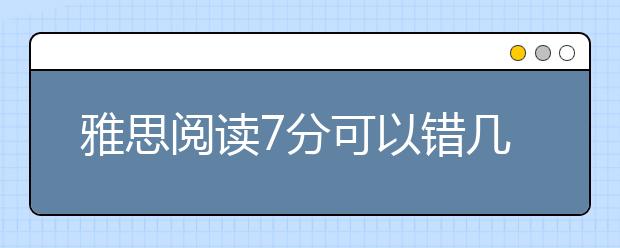You are advised to spend about 20 minutes on Questions 27 – 40
The Discovery of Uranus
Someone once put forward an attractive though unlikely theory. Throughout the Earth’s annual revolution around the sun, there is one point of space always hidden from our eyes. This point is the opposite part of the Earth’s orbit, which is always hidden by the sun. Could there be another planet there, essentially similar to our own, but always invisible?
If a space probe today sent back evidence that such a world existed it would cause not much more sensation than Sir William Herschel’s discovery of a new planet, Uranus, in 1781. Herschel was an extraordinary man — no other astronomer has ever covered so vast a field of work — and his career deserves study. He was born in Hanover in Germany in 1738, left the German army in 1757, and arrived in England the same year with no money but quite exceptional music ability. He played the violin and oboe and at one time was organist in the Octagon Chapel in the city of Bath. Herschel’s was an active mind, and deep inside he was conscious that music was not his destiny; he therefore, read widely in science and the arts, but not until 1772 did he come across a book on astronomy. He was then 34, middle-aged by the standards of the time, but without hesitation he embarked on his new career, financing it by his professional work as a musician. He spent years mastering the art of telescope construction, and even by present-day standards his instruments are comparable with the best.
Serious observation began 1774. He set himself the astonishing task of ‘reviewing the heavens’, in other words, pointing his telescope to every accessible part of the sky and recording what he saw. The first review was made in 1775; the second, and most momentous, in 1780-81. It was during the latter part of this that he discovered Uranus. Afterwards, supported by the royal grant in recognition of his work, he was able to devote himself entirely to astronomy. His final achievements spread from the sun and moon to remote galaxies (of which he discovered hundreds), and papers flooded from his pen until his death in 1822. Among these, there was one sent to the Royal Society in 1781, entitled An Account of a Comet. In his own words:
On Tuesday the 13th of March, between ten and eleven in the evening, while I was examining the *all stars in the neighbourhood of H Geminorum, I perceived one that appeared visibly larger than the rest; being struck with its uncommon magnitude, I compared it to H Geminorum and the *all star in the quartile between Auriga and Gemini, and finding it to be much larger than either of them, suspected it to be a comet.
Herschel’s care was the hallmark of a great observer; he was not prepared to jump any conclusions. Also, to be fair, the discovery of a new planet was the last thought in anybody’s mind. But further observation by other astronomers besides Herschel revealed two curious facts. For the comet, it showed a remarkably sharp disc; furthermore, it was moving so slowly that it was thought to be a great distance from the sun, and comets are only normally visible in the immediate vicinity of the sun. As its orbit came to be worked out the truth dawned that it was a new planet far beyond Saturn’s realm, and that the ‘reviewer of the heavens’ had stumbled across an unprecedented prize. Herschel wanted to call it georgium sidus (Star of George) in honour of his royal patron King George III of Great Britain. The planet was later for a time called Herschel in honour of its discoverer. The name Uranus, which was first proposed by the German astronomer Johann Elert Bode, was in use by the late 19th century.
Uranus is a giant in construction, but not so much in size; its diameter compares unfavourably with that of Jupiter and Saturn, though on the terrestrial scale it is still colossal. Uranus’ atmosphere consists largely of hydrogen and helium, with a trace of methane. Through a telescope the planet appears as a *all bluish-green disc with a faint green periphery. In 1977, while recording the occultation 1 of a star behind the planet, the American astronomer James L. Elliot discovered the presence of five rings encircling the equator of Uranus. Four more rings were discovered in January 1986 during the exploratory flight of Voyager 2 2 , In addition to its rings, Uranus has 15 satellites (‘moons’), the last 10 discovered by Voyager 2 on the same flight; all revolve about its equator and move with the planet in an east—west direction. The two largest moons, Titania and Oberon, were discovered by Herschel in 1787. The next two, Umbriel and Ariel, were found in 1851 by the British astronomer William Lassell. Miranda, thought before 1986 to be the innermost moon, was discovered in 1948 by the American astronomer Gerard Peter Kuiper.
Glossary:
‘O
ccultation
‘ :
in astronomy, when one object passes in front of another and hides the second from view, especially, for example, when the moon comes between an observer and a star or planet .
‘
Voyager 2
‘ :
an unmanned spacecraft sent on a voyage past Saturn, Uranus and Jupiter in 1986; during which it sent back information about these planets to scientists on earth
.
Questions 27-31
Complete the table below. Write a date for each answer.
Write your answers in boxes 27-31 on your answer sheet.
| Event |
Date
|
|
Example
William Herschel was born |
Answer
1738 |
| Herschel began investigating astronomy | (27)…………. |
| Discovery of the planet Uranus | (28)…………. |
| Discovery of the moons Titania and Oberon | (29)…………. |
| First discovery of Uranus’ rings | (30)…………. |
| Discovery of the last 10 moons of Uranus | (31)…………. |
Questions 32-36
Do the following statements reflect the claims of the writer of the Reading Passage?
In boxes 32-36 on your answer sheet write
YES
if the statement reflects the claims of the writer
NO
if the statement contradicts the writer
NOT GIVEN
if it is impossible to say what the writer thinks about this
Example Answer
Herschel was multi-talented
YES
32 It is improbable that there is a planet hidden behind the sun.
33 Herschel knew immediately that he had found a new planet.
34 Herschel collaborated with other astronomers of his time.
35 Herschel’s newly-discovered object was considered to be too far from the sun to be a comet.
36 Herschel’s discovery was the most important find of the last three hundred years.
Questions 37-40
Complete each of the following statements (Questions 37-40) with a name from the Reading Passage.
Write your answers in boxes 37-40 on your answer sheet.
The suggested names of the new planet started with …….. (37) …….. , then …….. (38) ……. , before finally settling on Uranus. The first five rings around Uranus were discovered by …….. (39) ……… From 1948 until 1986, the moon …….. (40)……. . was believed to be the moon closest to the surface of Uranus.
Answer:
27. 1772
28. 1781
29. 1787
30. 1977
31. 1986
32. YES
33. NO
34. NOT GIVEN
35. YES
36. NOT GIVEN
37.
georgium
sidus
38. Herschel
39. James L. Elliot
40. Miranda



 雅思阅读A类-Sample 20:The Pursuit of Happiness
雅思阅读A类-Sample 20:The Pursuit of Happiness
 雅思阅读A类-Sample 19:Creating Artificial Reefs
雅思阅读A类-Sample 19:Creating Artificial Reefs
 雅思阅读A类-Sample 17:The Danger Of Ecstasy
雅思阅读A类-Sample 17:The Danger Of Ecstasy
 雅思阅读A类-Sample 16:Destinations For International English Students
雅思阅读A类-Sample 16:Destinations For International English Students
 雅思阅读A类-Sample 15:Beneath The Canopy
雅思阅读A类-Sample 15:Beneath The Canopy
 雅思阅读A类-Sample 13:A.D.D. Missing Out on Learning
雅思阅读A类-Sample 13:A.D.D. Missing Out on Learning
 雅思阅读A类-Sample 14:The Beam Operated Traffic System
雅思阅读A类-Sample 14:The Beam Operated Traffic System
 雅思阅读A类-Sample 12:The Scientific Method
雅思阅读A类-Sample 12:The Scientific Method
 雅思阅读A类-Sample 11:The Rocket From East To West
雅思阅读A类-Sample 11:The Rocket From East To West
 雅思阅读A类-Sample 9:Paper Recycling
雅思阅读A类-Sample 9:Paper Recycling
 怎么做好一篇雅思阅读的填空题
怎么做好一篇雅思阅读的填空题  雅思阅读考试答题顺序
雅思阅读考试答题顺序  雅思阅读考试提升技巧!
雅思阅读考试提升技巧!  雅思阅读考试文章的原文一般是出自哪里?
雅思阅读考试文章的原文一般是出自哪里?  雅思阅读7分可以错几道题?
雅思阅读7分可以错几道题?  如何复习雅思阅读中的语法...
如何复习雅思阅读中的语法...
 做剑桥雅思7的听力和阅读能到7分,上考场可...
做剑桥雅思7的听力和阅读能到7分,上考场可...
 剑桥雅思阅读AUSTRALIA’SSPOR...
剑桥雅思阅读AUSTRALIA’SSPOR...
 有没有剑桥雅思1和2的解析 2023年6月...
有没有剑桥雅思1和2的解析 2023年6月...
 雅思阅读真题和剑桥雅思难度(剑桥雅思5阅读...
雅思阅读真题和剑桥雅思难度(剑桥雅思5阅读...